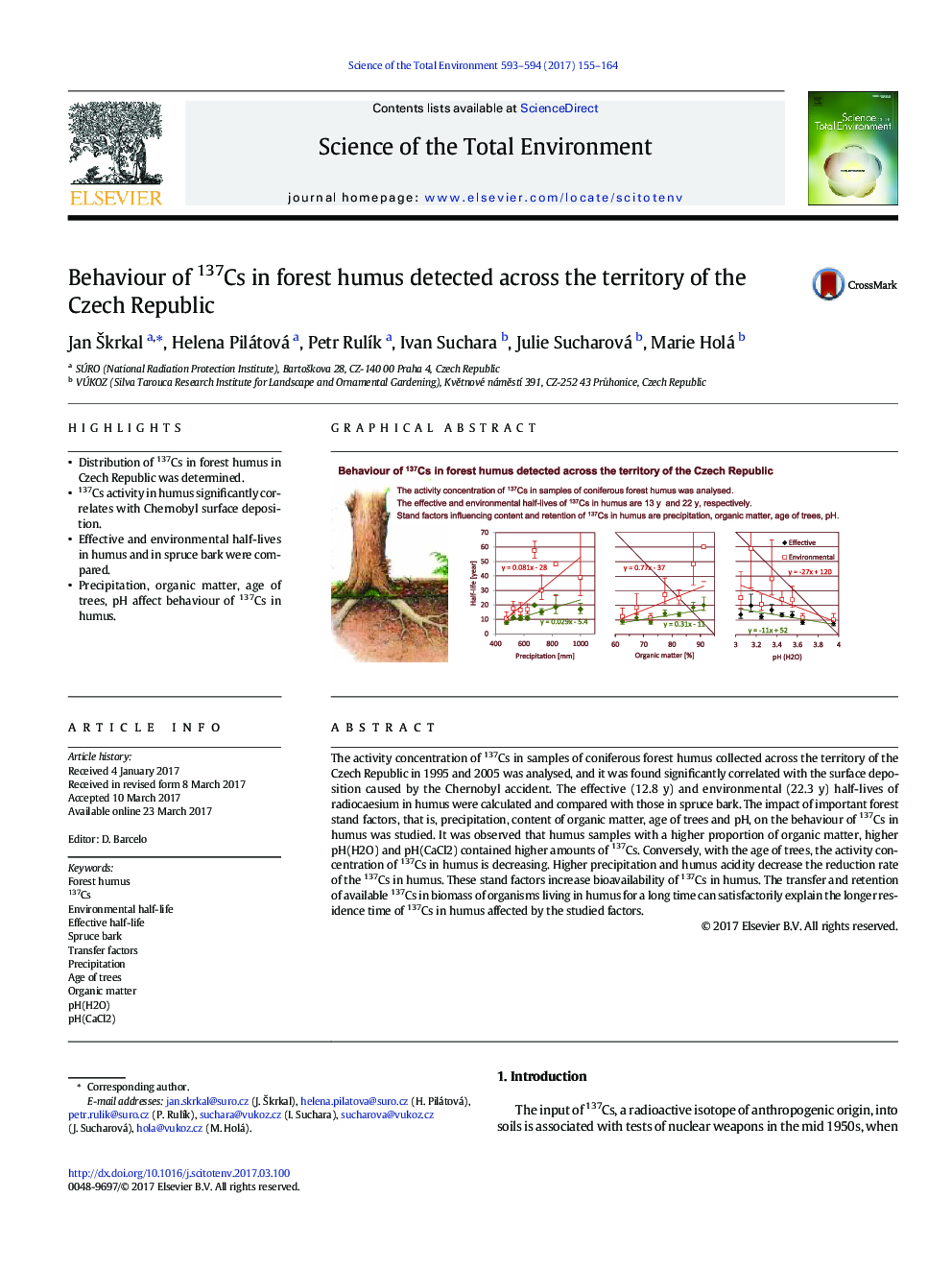| Article ID | Journal | Published Year | Pages | File Type |
|---|---|---|---|---|
| 5750843 | Science of The Total Environment | 2017 | 10 Pages |
â¢Distribution of 137Cs in forest humus in Czech Republic was determined.â¢137Cs activity in humus significantly correlates with Chernobyl surface deposition.â¢Effective and environmental half-lives in humus and in spruce bark were compared.â¢Precipitation, organic matter, age of trees, pH affect behaviour of 137Cs in humus.
The activity concentration of 137Cs in samples of coniferous forest humus collected across the territory of the Czech Republic in 1995 and 2005 was analysed, and it was found significantly correlated with the surface deposition caused by the Chernobyl accident. The effective (12.8 y) and environmental (22.3 y) half-lives of radiocaesium in humus were calculated and compared with those in spruce bark. The impact of important forest stand factors, that is, precipitation, content of organic matter, age of trees and pH, on the behaviour of 137Cs in humus was studied. It was observed that humus samples with a higher proportion of organic matter, higher pH(H2O) and pH(CaCl2) contained higher amounts of 137Cs. Conversely, with the age of trees, the activity concentration of 137Cs in humus is decreasing. Higher precipitation and humus acidity decrease the reduction rate of the 137Cs in humus. These stand factors increase bioavailability of 137Cs in humus. The transfer and retention of available 137Cs in biomass of organisms living in humus for a long time can satisfactorily explain the longer residence time of 137Cs in humus affected by the studied factors.
Graphical abstractDownload high-res image (440KB)Download full-size image
